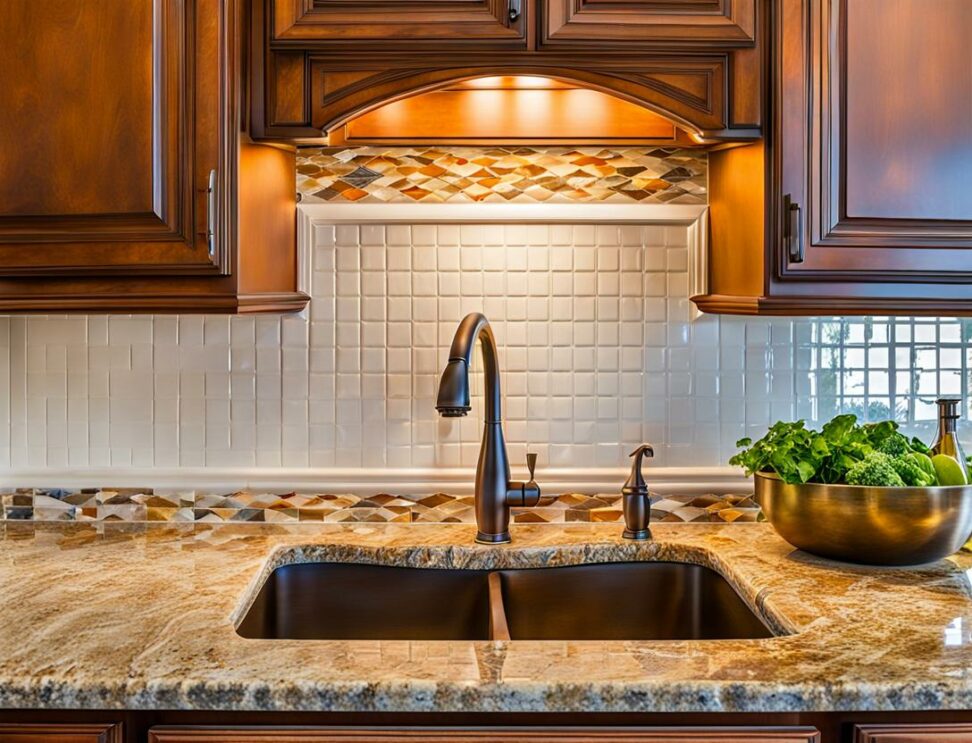The Complete Guide to Effortlessly Removing Your Kitchen Backsplash in 6 Simple Steps
If your kitchen backsplash tile is looking outdated or damaged, replacing it can completely transform the look and feel of your kitchen. But before you can install a fresh new backsplash, you need to remove the existing tile. Backsplash removal may sound daunting, but with the right tools and techniques, it can be a surprisingly straightforward DIY project.
We'll cover all the basics - from gathering supplies to prepping the wall for new tile. Follow our tips below to safely and efficiently remove your old backsplash in just a weekend.

Getting Started: Tools & Safety Tips
Before you start demolition, it's important to ensure you have the proper gear to protect yourself throughout the removal process. Here are the basic tools and safety supplies you'll need:
- Safety glasses and gloves
- Dust mask or respirator
- Pry bar
- Putty knife
- Hammer and chisel set
- Utility knife or oscillating tool
- Drop cloths
Use safety glasses, dust masks, and gloves to protect yourself from debris and dust. Cover nearby surfaces with drop cloths to simplify cleanup later. Turn off power to any outlets behind the backsplash before prying off tiles.
Step 1: Remove Grout
Start by clearing out the grout between existing tiles. This gives you a smooth surface to pry against when removing the tiles. Use a grout removal tool, grout rake, oscillating tool, or even an old flat head screwdriver to scrape out old grout.
You may need to apply a bit of force, but be cautious around the tile edges. Completely clearing grout lines takes patience, but it's worth the effort prior to tile removal.
Step 2: Pry Off Tiles
With the grout removed, it's time to carefully pry the tiles off the wall. Begin with the bottom row and work upward. Insert the flat edge of a pry bar under each tile and gently lever it off the wall. Apply pressure slowly to avoid cracking tiles or damaging the surface underneath.
If some tiles resist removal, use a hammer and chisel to carefully chip away mortar behind the stubborn spots before prying. Or make precision cuts with a utility knife or oscillating tool to further help loosen tiles.
Step 3: Scrape Away Adhesive
Once all whole tiles are pried off, inspect the wall for any remaining tile fragments or adhesive. Use a putty knife, chisel, or oscillating tool to diligently scrape off every last bit of old thinset mortar or adhesive.
Getting down to the bare wall surface is crucial for proper adhesion with your new backsplash tiles. Be persistent and thorough removing any old backsplash residue.
Step 4: Clean Up Debris
Now that the tedious demolition is complete, carefully discard broken tiles and debris. Remove dust and crumbs with a vacuum, broom and dustpan. Then wipe the walls down with a slightly damp sponge to eliminate dust before it resettles.
Proper cleanup is a critical intermediate step before inspecting the wall condition and beginning surface prep for new tile.
Step 5: Repair Wall as Needed
With your walls cleared of old tile and adhesive, check for any damage that may need repairing. Use drywall joint compound to patch small holes, cracks, or uneven areas so your new backsplash has a smooth surface for installation.
Take time to properly fix any imperfections for best results. Allow patching compounds to dry completely before moving to the next stage.
Step 6: Prepare Surface for New Tile
To complete the process, properly prep the backsplash area so your wall is ready for new tile. Lightly sand any patching work once dry and then wipe down the entire surface with a damp sponge.
After ensuring the wall is clean, smooth, and dry, you can start applying your chosen backsplash tiles. Enjoy your updated kitchen!
Removing stubborn backsplash tile often requires persistence. But a few handy tricks can help simplify the process:
- Soak tiles with water before prying to soften old adhesive
- Heat tiles with a hair dryer to loosen bonding
- Use vinegar solution to remove grout residue
- Cut stubborn tiles with oscillating tool to break grip
Now you have all the information needed to safely remove your existing kitchen backsplash tile. With the right tools and techniques, you can renovate this space on your own in just a weekend. Just take your time and follow the steps.